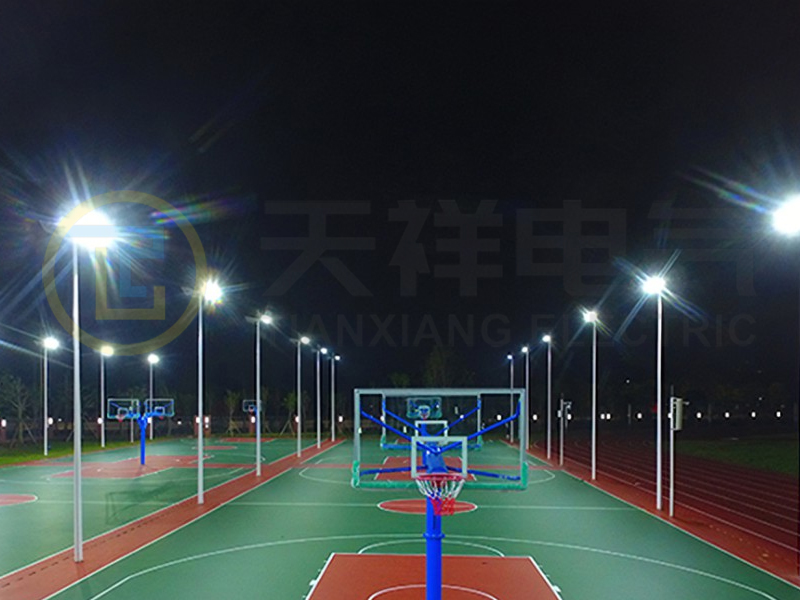When it comes to outdoor sports, the importance of proper lighting cannot be overstated. Outdoor sports venue lighting plays a vital role in ensuring athletes perform at their best, while also providing a safe and enjoyable experience for spectators. However, the effectiveness of stadium lighting isn’t just about the fixtures themselves; It’s also about knowing when they’re best used. This article delves into the complexities of outdoor sports venue lighting, focusing on the timing and technology that contribute to the success of sporting events.
Importance of lighting in outdoor sports venues
Outdoor stadium lighting serves many purposes. First and foremost, it increases player visibility, allowing them to perform at their best regardless of the time of day. Whether it’s a late afternoon soccer game or a nighttime soccer game, proper lighting ensures athletes can clearly see the ball, teammates, and the field.
Additionally, good lighting is crucial for the safety of athletes and spectators. Poorly lit areas can lead to accidents, injuries, and a negative experience for fans. Additionally, a well-lit stadium can enhance the overall ambience of an event, making it more enjoyable for everyone involved.
When to use stadium lighting
Timing of outdoor sports venue lighting is critical. It’s not just about turning on the lights when the sun goes down; It involves strategic planning to ensure effective use of lighting throughout the event. Here are some key considerations regarding stadium lighting times:
1. Preparation before the event
Before any sporting event, the lighting system must be thoroughly inspected. This includes testing all light fixtures to ensure they are functioning properly. Ideally this should be done during the day to allow for any necessary adjustments to be made before the event begins. Proper timing of this stage can prevent last-minute issues that could disrupt the event.
2. Things to note at dusk and dawn
Natural light changes rapidly when the sun sets or rises. Stadium lighting should be adjusted accordingly. For events that begin at dusk, it’s critical to turn on the lights before natural light disappears completely. This ensures a smooth transition and maintains visibility for players and fans. Conversely, for events that end at dusk, the lights should gradually dim to allow for safe exit.
3. Game time
In actual events, the timing of lighting adjustments can enhance the viewing experience. For example, during intermissions or breaks, lighting can be used creatively to highlight performances, advertising, or other entertainment. This not only keeps the audience engaged but also maximizes the use of the lighting system.
4. Post-event lighting
It’s also important to turn off the lights after the event. It is recommended to keep the lights on for a short time after the event to ensure the safe exit of athletes and spectators. This is especially important for large stadiums, where crowd control can be a challenge.
Outdoor stadium lighting technology
The technology behind outdoor stadium lighting has evolved significantly over the years. Modern lighting systems are designed to provide necessary lighting in an energy-efficient, economical and efficient manner. Here are some of the key technological advancements transforming stadium lighting:
1. LED lighting
LED lights have become the gold standard for outdoor sports venue lighting. They offer many advantages over traditional lighting systems, including lower energy consumption, longer life and less heat output. Additionally, LED lights can be easily dimmed or adjusted for greater control over the lighting environment.
2. Intelligent lighting system
The emergence of smart technology has revolutionized the way stadium lighting is managed. Smart lighting systems can be programmed to automatically adjust based on the time of day, weather conditions, and even the specific needs of a sporting event. This level of automation not only enhances the player and fan experience, it also reduces the workload for stadium staff.
3.Remote control and monitoring
Modern stadium lighting systems often feature remote control capabilities, allowing operators to manage lights remotely. This is especially useful for large stadiums where manual adjustments can be cumbersome. Additionally, a real-time monitoring system can alert operators to any issues, ensuring they are resolved promptly.
In conclusion
Outdoor stadium lighting is an important part of any sporting event, affecting athlete performance and spectator enjoyment. Understanding when to use these lighting systems is as important as the technology behind them. By leveraging advances in lighting technology and implementing strategic timing, stadiums can create the best possible environment for athletes and fans. As the world of outdoor sports continues to evolve, so too do the methods and technology used to illuminate these venues, ensuring people can experience the excitement of the game at any time of the day.
Post time: Sep-27-2024





